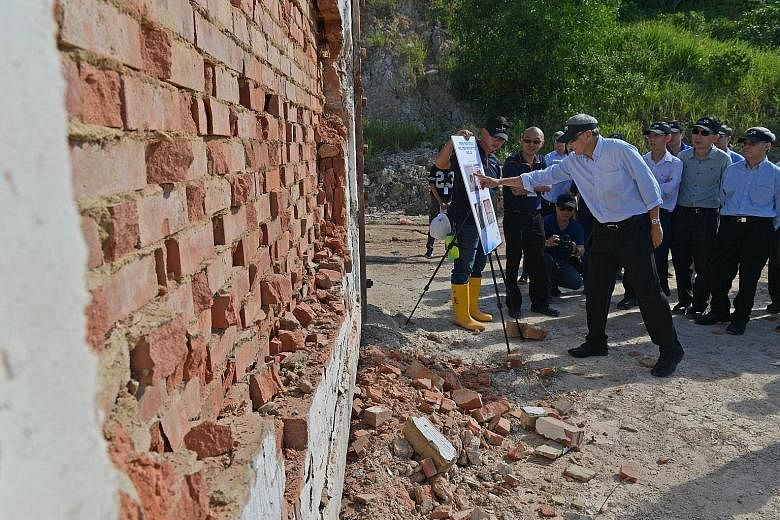The walls of large buildings may be able to withstand a bombing from the outside, but the impact may still cause concrete and bricks to come loose at high speeds that may injure or even kill those inside.
Scientists from the Defence Science and Technology Agency (DSTA) are working on minimising this hazard, known as "spalling", by using mats made of fibre reinforced polymer (FRP). The mats, which can be applied to the walls of vital existing structures, can act as nets, catching debris and preventing it from harming those inside.
DSTA tested the blast response of such reinforced concrete walls on Wednesday, as part of a series of experiments known as the Explosive Testing of Structural Components (ETSC) .
The application of FRP to walls was found to make them 2.5 times more resistant to blast effects. It has applications as a cost-effective way of enhancing the blast resiliency of existing buildings as it requires minimal teardown and reconstruction.
Defence Minister Ng Eng Hen, accompanied by senior officials from the Ministry of Defence and the Singapore Armed Forces (SAF), attended the ETSC, which is meant to assess and collect data on new concepts in protective structures.
The ETSC supports the SAF in the design and development of critical buildings in the light of a heightened level of threat, and has applications in non-military contexts as well.
In a Facebook post yesterday, Dr Ng said the information about the FRP will be used to build homes and bomb shelters that can better protect civilians. "For example, using better design and materials, bomb shelters can have thinner walls or shorter setbacks and yet remain just as survivable. This new information provides us with better options in building HDB homes," he said.
This year's test, which is the sixth held here since the programme began in 1994, started on Monday and will go on till May 27 on Pulau Senang, an island off the south- west coast of mainland Singapore.
DSTA also experimented on a variety of concepts and structures, including an alternative design for storing ammunition through an arch structure that is deemed safer in the event of an accidental explosion from within.
During the tests, only the door of the arched structure was destroyed, while the rest of it remained intact, minimising the possible hazard.
The ETSC also included tests on the use of steel jackets in protecting building columns, carried out in collaboration with the Ministry of Home Affairs.


